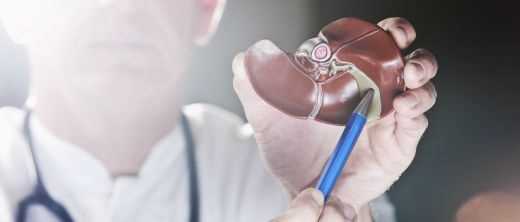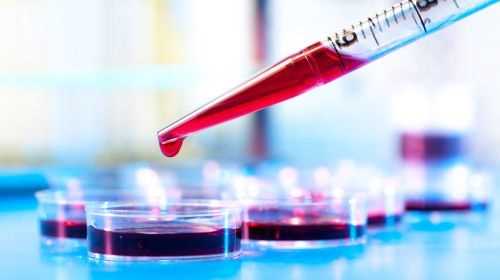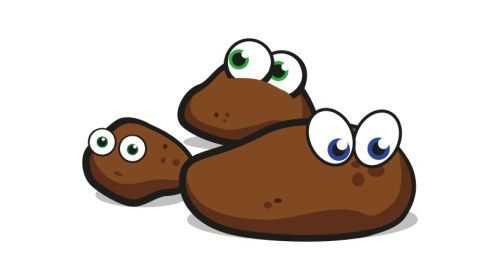The digestion of fats (lipids) is not an easy task: the liver produces bile acid to support this process. Apart from their function in the body, bile acids can also play a role in the diagnosis of various diseases. What do the corresponding laboratory values say? When and how are they examined?
The liver stores the bile acid it produces in the gallbladder, embedded in the bile. There they wait for their action: If fat has to be digested, the gallbladder releases its digestive fluid into the duodenum. The acids then make it easier for the enzymes to digest and absorb the lipids. At the same time, they offer the organism an opportunity to excrete excess cholesterol.
Article overview:
What are bile acids?
The liver uses cholesterol, among other things, to produce the various bile acids. In combination with glycine and taurine, it produces primary bile acids such as cholic acid and chenodeoxycholic acid. When these primary acids come into contact with the digestive enzymes of certain bacteria in the intestine, they turn into secondary bile acids. They include, for example, lithocholic acid and deoxycholic acid. Both groups of bile acids create the conditions for the rapid and effective utilization of fats.
| Only some of the bile acids are excreted in the stool. When the work is done – once the fat digestion has taken place – the liver recycles the majority of them. |
In order to reuse them, the body filters the bile acids from the ileum. They reach the liver via the blood, where they are prepared for a new use. Doctors speak of the so-called enterohepatic cycle.
When and how does the doctor check the bile acids?
If the doctor suspects that someone is suffering from liver, gallbladder or bowel disease, he or she will arrange for a blood test. He can use the blood serum to determine what quantities of resorbed bile acids are on their way to the liver. Symptoms such as indigestion, severe abdominal pain or itching all over the body speak in favor of an examination of the bile acids.
| Blood is usually drawn on an empty stomach. The person concerned should not have eaten anything for at least twelve hours beforehand. For people who find this difficult, an appointment in the morning is ideal. |
What is the normal range of laboratory values?
For a laboratory determination of bile acids, a concentration of up to 10 micromoles per liter of serum (µmol / l) as normal. A few hours after a meal, the value is significantly higher – then the blood is just transporting many bile acids back to the liver.
Causes for too high laboratory values
If the values of bile acids are elevated, this can indicate various diseases. The following are among others:
- intrahepatic or extrahepatic cholestasis (congestion of bile; for example due to gallstone / s)
- Inflammation of the liver (hepatitis), especially caused by viruses
- Damage to the liver from alcohol or other toxins
- primary biliary cholangitis (PBC; associated with inflammation of the liver and biliary tract)
- Cystic fibrosis (chronic metabolic disease)
- Rejection of a transplanted liver
The high bile acid values are usually the result of a disturbed reuptake in the liver or an overly filled gall bladder. The slower the liver processes used bile acids, the more they accumulate in the blood. The increased concentration and the underlying cause should definitely be treated – otherwise permanent damage to the liver cells may result.
In general, no definitive statement about a possible disease can be made from the increased bile acids alone. It is therefore useful to check other important parameters such as liver function values or bilirubin.
Are there values that are too low?
Detecting low levels of bile acids in the blood is difficult. On a fasted person, normal levels can vary between 0 and 10 micromoles per liter. Rather, a doctor examines how the amount changes after a meal. If it stays the same several hours after eating or if it hardly increases, this may be due to a problem with reuptake from the intestine, for example.
In bile acid loss syndrome, the body excretes a large part of the bile acids in the stool. It is often caused by inflammatory bowel disease such as Crohn’s disease or surgical removal of the ileum. The examination of stool samples provides an important signal here.
.


